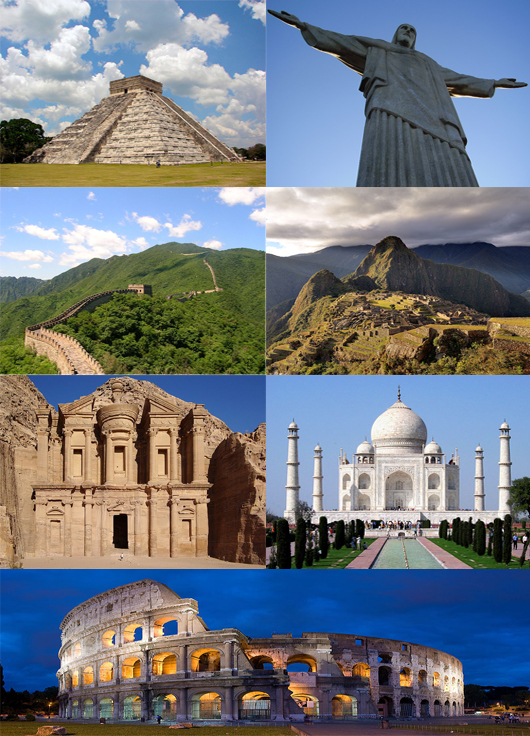Seven Wonders of the World
January 31, 2023
This article is about the seven wonders of the world and why they are so vital to us for both what they represent and the incredible ingenuity it took to make these great feats of architecture.
1. The Roman Colosseum:
The great Roman Colosseum is the largest amphitheater ever built, and it’s located in the center of Rome. It was where gladiators once fought each other for the entertainment of the Roman people. The Colosseum was constructed from sand and stone and took eight years to build. Still, when finished, it could hold 80,000 spectators, making it such a significant importance to the Romans because it allowed the Roman people to be entertained on a large scale. Over time though, the Colosseum has degraded, but it still holds strong today and can be seen in Rome, Italy.
2. The Great Wall Of China:
The Great wall of China is a huge barrier that is thousands of miles long and spans along China’s northern border. The wall was just a bunch of smaller walls meant to keep out raiders. But then, one day, emperor Qin Shi Huang decided to make all the smaller walls into one ginormous wall to keep china better protected when the wall was complete; it spanned 13,171 miles long. Because it was so vast and vital to the history, it is recognized as a world wonder.
3. The Taj mahal:
The Taj Mahal is a renowned palace in India found on the Yamuna River in Agra. It has been selected as one of the world’s wonders due to its exquisite architecture and beautiful marble columns. It was initially built as a tomb for emperor Shah Jahan’s wife, who unfortunately died during childbirth. It took 22 years to complete the building process, but after the palace was completed, it was breathtaking and had luxurious gardens and guest houses. Because of all this, the palace is considered a priceless wonder of the world.
4. Christ the Redeemer:
The Christ the Redeemer statue is found in Brazil on top of Mount Corcovado. It stands 30 meters tall. This monument is an essential treasure to Brazil because of its fantastic architecture. This monument was designed by the Polish sculptor Paul Landowski, and it was made of reinforced concrete clad and over 6 million soapstone tiles. Christ the Redeemer is the giant Art Deco sculpture in the world. It was built just after the end of world war 1. The statue was meant to symbolize Christianity and hope after the tragic war. And because of the incredible monument and the symbol it represents, it is considered a true wonder of the world.
5. Machu Picchu:
Machu Picchu is found in Peru and is a citadel for the Incas. It is believed that the Inca emperor Pachacuti lived in the citadel for his entire life, and in the citadel, other than himself, lived his most essential workers. Machu Picchu was made from polished dry stone, and because dry stone is so sturdy, it allowed for the majority of Machu Picchu to be intact. Therefore, Machu Picchu is a wonder of the world because it represents what life was like for the Incas.
6. Chichen Itza:
In the Mexican state of Yucatan, Chichen Itza is a Mayan city constructed by the pre-Columbian Mayan tribe Itza. The city is known for its monuments and temples built for worship and rituals. However, the most important part of the city of Chichen Itza is the step pyramid known as El Castillo. The step pyramid is significant and well known because it is an impressive monument with 365 steps, each resembling a day of the year. Also, during the spring and summer equinoxes, the step pyramid allows shadows to be cast that resembles a feathered serpent. So because of the Impressive city and step pyramid, Chichen Itza is considered a world wonder.
7. Petra:
The Ancient City of Petra, found in southern Jordan, is known as the rose city for its golden hue. It’s believed it was built as far back as 312 BC. Petra was a wealthy trade route in a remote valley, but an earthquake initially destroyed vast cargo, and Petra was abandoned. The main reason Petra is considered a wonder of the world is that it is an old and beautiful city shrouded in mystery.
In conclusion, the wonders of the world because they are advanced and significant accomplishments in architecture and because they are either historically substantial or symbolize something important to people.

Sara Hilger • Jan 31, 2023 at 9:45 am
Amazing read! Great job Richard!